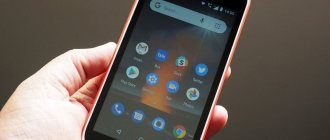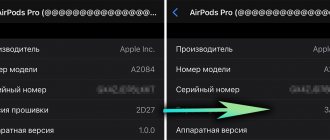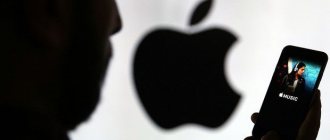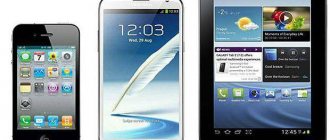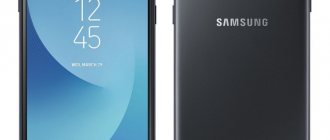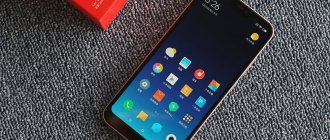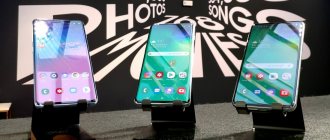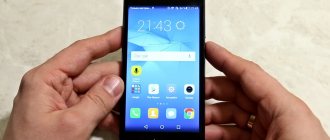New leader, old stagnation
According to global monitoring data from IDC, Apple showed maximum smartphone sales in the fourth quarter of 2020 at 73.8 million units, thus occupying 20.0% of the global market and for the first time in many years, displacing the traditional leader, the company, from the first place Samsung.
The last time something similar happened in the global smartphone market was five years ago, when, according to Gartner, sales of Samsung smartphones in the fourth quarter of 2014 decreased to 73 million units, while sales of Apple smartphones immediately increased by 49% to 74 .8 million pieces.
In total, at the end of 2020, Samsung was able to maintain first place with a shipment volume of 295.7 million units and a market share of 21.6%. Moreover, Apple, with sales of 191.0 million smartphones and a market share of 13.9% at the end of 2020, had to be content with only third place, losing second to Chinese Huawei with sales of 240.6 million smartphones and a market share of 17.6%.
At the end of the fourth quarter of 2020, suppliers shipped 368.8 million smartphones. This is 2.9% more than in the previous quarter, but 1.1% less than the same period the previous year. Totals for the whole of 2020 showed a decrease in global sales to 1,371.0 million smartphones, which is 2.3% less than in 2020.
According to IDC analysts, sluggish smartphone sales are partly due to weak demand in China, where consumers are hoping for the imminent availability of low-cost 5G models as 5G network coverage increases.
“2019 was the third consecutive year of decline in global sales, even as the new 5G market emerged and smartphones with new technologies were shipped, including foldable models. The fourth quarter of 2019 was successful for some leaders such as Apple, Xiaomi and OPPO, mainly due to new products, reducing the impact of weak sales in China. Xiaomi and OPPO performed well in India and are gaining traction in Western Europe, similar to Huawei's success a few years ago. Apple performed well in the US market, where its market share grew by 50% in the fourth quarter. Looking ahead, 5G models—more specifically, affordable 5G smartphones—should be the catalyst for 2020 sales to avoid a continuation of the three-year decline,” said Anthony Scarsella, research manager for IDC Worldwide Quarterly Mobile Phone Tracker.
Farming on gadgets. Demand for smart home equipment has increased in St. Petersburg
11458
Karashash Nogaeva
IDC takes into account the supply of smartphones to retailers, however, retailers also provide similar figures for actual sales. Thus, according to the estimates of the M.Video-Eldorado group and Svyaznoy, sales of smartphones in Russia in 2020 amounted to about 30 million devices worth about 495 billion rubles, which is an increase of 1.5% in units and 7% in money than in 2020. In units, sales were the largest in 6 years; in monetary terms, the market was almost twice as large as in pre-crisis 2014. In St. Petersburg, total sales of smartphones in networks increased by 30% in units and by a quarter in money, oh.
The GfK Russia agency confirms that in 2020, Russians purchased a record number of smartphones – 30.14 million units – and spent the same 495 billion rubles on them. In physical terms, according to agency estimates, the market volume grew by 2%, which was largely facilitated by the replacement of obsolete devices with new ones and the transition from simple push-button phones to more technically advanced smartphones.
On the global market, last year also turned out to be a record year – the first decline in sales since 2008. In 2020, the global smartphone market decreased by 2%, to 1.52 billion units, according to Gartner. Analysts expect 5G smartphones and pent-up demand to revive the market. Canalys calculated that sales decreased by the same 2%, but to 1.37 billion units.
“When we saw the first decline in global market volume a couple of years ago, Canalys said the industry was moving from an era of growth to a cyclical era. Now that's what happened. This growth spurt won't last forever, but it will be just one of several peaks and troughs as users' smartphone upgrade rates reach a new equilibrium point,” said Canalys senior analyst Ben Stanton.
Sales of smartphones in Russia
Source: M.Video-Eldorado
Apple
According to preliminary results of the fourth quarter of 2020, sales of Apple iPhone smartphones reached 73.8 million, showing an increase of 7.9% year-on-year. Record performance and first place in the global quarterly ranking of suppliers ensured high demand for Apple products during the holiday season.
Top 5 global smartphone market. Source: IDC
The highest demand for the iPhone 11 family of new products was shown in regions with high purchasing power, such as the United States and Europe, while demand for the iPhone XR remained high throughout the world.
According to Apple itself, the iPhone 11 remained the best-selling model throughout all weeks of December, and three new models in the latest series showed the best sales throughout the quarter. Despite the high price of the iPhone 11, promotions did their job, and numerous financial installment offers ensured the availability of the smartphone.
Changing positions of brands in the smartphone market. Source: IDC
According to IDC analysts, rumors about the upcoming launch of a new “budget” iPhone SE could provide Apple with additional market share growth due to demand in emerging markets, especially if the price is attractive enough for buyers on a limited budget.
News / June 2020RetailSmartphones showed growth
At the end of the first half of 2020, the Russian smartphone market grew by 4.4% in monetary terms. This was reported by the press service of MTS PJSC with reference to its own analytical data. The number of gadgets sold decreased by 4.1%. According to representatives of the MTS press service, the leaders in sales among smartphone manufacturers are Honor, Samsung, Xiaomi, Apple and Huawei. “The decrease in customer flow in April affected the results of the first half of the year and the second quarter, but already in June we see positive dynamics in sales,” the MTS press service reported.
The operator Tele2 is also observing an increase in sales. According to the company's press secretary Daria Kolesnikova, according to the results of the first half of the year, despite the impact of the pandemic, sales of devices in the Tele2 retail network not only did not fall, but even increased by 3% year-on-year in units. “To fully use digital services, customers choose higher quality and more expensive smartphones, so in monetary terms in January-June 2020, sales showed an impressive growth of 22% year-on-year. The best-selling models in Tele2 retail are Samsung, Huawei, Xiaomi and Honor smartphones,” notes Daria Kolesnikova.
The head of the smartphone and tablet purchasing group, Sergei Vorzov, speaks about the growth in smartphone sales in monetary terms by 76% compared to last year. According to him, in the first quarter the market showed growth. “Our network has recorded positive dynamics with sales increasing by 62% compared to the same period last year. In the second quarter, there was a market slowdown due to the spread of the virus. In some weeks of May, the negative dynamics reached 40% year on year. During the pandemic, there was a shift in sales to online channels. We, as e-commerce leaders, achieved a 92% increase in smartphone sales in monetary terms at the end of the second quarter compared to last year. The top 5 manufacturers were Xiaomi, Honor, Apple, Samsung, Huawei. If there is no second wave of the spread of the virus, then we expect our own positive sales dynamics to continue in the third quarter,” reports Sergei Vorzov.
According to the M.Video-Eldorado group, the smartphone market began to recover in May after a short-term decline in April. “Unit sales in Russia in May approached the level of last year, and in monetary terms they increased by about 3%. In June, the Russian smartphone market accelerated its growth rate; in the first three weeks, smartphone sales in monetary and physical terms increased by approximately 20% compared to June 2020. The M.Video-Eldorado Group demonstrates dynamics above the market - in both brands there is demand for smartphones increased by a third in monetary and physical terms, which allowed the group to strengthen its leadership position in the smartphone market due to a wide range, convenient delivery and competitive prices,” said the press service of the M.Video-Eldorado group. At the same time, according to a representative of the press service, prices and the average bill remained at the level of last year - about 16 thousand rubles. “Compared to last year, the share of the middle price segment has increased, from 10 thousand to 15 thousand rubles, while flagship models from 50 thousand rubles are in stable demand. The top 5 most popular models in the two networks included Samsung Galaxy A51, Xiaomi Redmi 7A, Samsung A30s, Xiaomi Redmi 8A, iPhone 11. In monetary terms, the leaders were iPhone 11, Samsung Galaxy A51 and A71, iPhone 11 Pro, Samsung A30s.” ,” the press service of M.Video-Eldorado told a ComNews correspondent.
Representatives of the press service of PJSC VimpelCom (Beeline) note that after the peak of the pandemic has passed, the smartphone market is beginning to return to normal sales volumes. The operator analyzed smartphone sales in its retail network and online store for two weeks in June. During this period, the number of smartphones sold was 11% higher than sales in the first two weeks of February. “The increase in sales was influenced by the traditional seasonality of demand. In addition, customers increasingly began to buy smartphones in the Beeline online store - the number of devices purchased on the Internet increased by 46%,” noted the Beeline press service. According to the operator, budget smartphones were the most popular. Sales of devices costing up to 5,000 rubles increased by 74%, and the bulk of sales with a share of 38% were occupied by smartphones costing from 5 thousand to 10 thousand rubles. “Among brands, customer preferences have not changed. The top three in terms of the number of devices sold are Samsung, Honor, Xiaomi, and in terms of sales revenue are Samsung, Apple, Honor,” representatives of the press service confirmed. According to them, the most popular model in the first two weeks of June was the Samsung Galaxy A01 with 16 Gb of memory, replacing the February leader Samsung Galaxy A10 with 32Gb of memory. “In 2020, Beeline expanded the possibilities of online purchases of smartphones. You can purchase smartphones without leaving your home in the Beeline online store and other popular Internet sites,” concluded a representative of the operator’s press service.
MegaFon Retail predicts a decline in online smartphone sales in the first half of 2020. According to a representative of the company's press service, sales volumes will decrease by 5% compared to the same period last year. “In April-May 2020, sales of smartphones in the MegaFon network decreased by 17% in units and by 20% in monetary terms compared to the same period in 2020. We expect that by the end of the year the decline in MegaFon Retail network revenue from smartphones will be 6-10% and the smartphone market as a whole will show a similar result. Demand is affected by the decrease in purchasing power of the population after the pandemic. The recovery in sales will depend on how stable the epidemiological situation is and how quickly people return to normal life,” said a representative of the press service of PJSC MegaFon. According to the operator, the top 5 manufacturers in terms of sales include Xiaomi, Honor, Samsung, Huawei and Apple.
Samsung
For Samsung, which reached peak sales in the third quarter of 2020, the loss of leadership to Apple was somewhat of a surprise, since sales of the popular Galaxy A series of smartphones were quite high.
| Company | Supply volume, Q4 2020, million | Market share, Q4 2019 | Supply volume, Q4 2020, million | Market share, Q4 2018 | Dynamics, year on year |
| Apple | 73,8 | 20,0% | 68,4 | 18,3% | 7,9% |
| Samsung | 69,4 | 18,8% | 70,3 | 18,8% | -1,2% |
| Huawei | 56,2 | 15,2% | 60,5 | 16,2% | -7,1% |
| Xiaomi | 32,8 | 8,9% | 25 | 6,7% | 31,1% |
| OPPO | 30,6 | 8,3% | 29,3 | 7,9% | 4,2% |
| Rest | 106 | 28,7% | 119,5 | 32,0% | -11,3% |
| Total | 368,8 | 100,0% | 373,1 | 100,0% | -1,1% |
Source: IDC Quarterly Mobile Phone Tracker, K4 2019
IDC believes that the slowdown in sales of Samsung smartphones is due to fewer announcements of new products, slower sales of 5G new products in the South Korean market and the too slow start of 5G in the global market.
IDC analysts predict an increase in sales of Samsung smartphones after the expected announcement in February of the new Galaxy S series and the new foldable Galaxy Fold model. IDC also expects the arrival of 5G smartphones in the Galaxy A series, which will be more affordable compared to the flagship 5G models of the S and Note series.
Smartphone buyers have become more economical
About 73% of all smartphone sales at the end of 2020 will come from models priced below $400, IDC reports based on the results of the Worldwide Quarterly Mobile Phone Tracker study. In an unstable global economy, buyers are increasingly interested in low- and mid-priced devices as their priorities shift to essentials.
As a result, according to IDC's forecast, revenue from smartphone sales worldwide will decline at the end of 2020 to $422.4 billion, which is 7.9% less than revenue of $458.5 billion at the end of 2020.
“Rising unemployment rates and uncertainty about the future have shifted consumer interest towards products in the economy and budget segments,” said Sangeetika Srivastava , senior analyst for mobile devices at IDC. – As a result, the overall portfolio of popular smartphones is also shifting towards devices in the low and mid-price ranges. This has only intensified competition, since in order to attract buyers, especially in the upper price segment, market participants are forced to create interesting price offers and profitable packages.”
Earlier, CNews reported on a report by Gartner analysts, who, based on the results of the second quarter of 2020, recorded a global drop in smartphone sales by 20.4% compared to the second quarter of 2020, to 294.7 million units. The market for mobile processors for smartphones over the same period, according to Counterpoint analysts, collapsed by 26% year-on-year, while market leader Qualcomm reduced its sales to 29% from 33% in the second quarter of 2020.
Huawei
Huawei significantly increased inventory in the third quarter, which brought the expected decrease in the fourth quarter of 2020, according to IDC. One of the limiting factors hindering the growth of the company's market share is also the high price of the Mate 30 series models.
| Company | Supply volume, 2020, million | Market share, 2019 | Supply volume, 2020, million | Market share, 2018 | Dynamics, year on year |
| Samsung | 295,7 | 21,6% | 292,2 | 20,8% | 1,2% |
| Huawei | 240,6 | 17,6% | 206 | 14,7% | 16,8% |
| Apple | 191 | 13,9% | 208,8 | 14,9% | -8,5% |
| Xiaomi | 125,6 | 9,2% | 119,1 | 8,5% | 5,5% |
| OPPO | 114,3 | 8,3% | 113,3 | 8,1% | 0,9% |
| Rest | 403,6 | 29,4% | 463,2 | 33,0% | -12,9% |
| Total | 1 371 | 100,0% | 1 402,6 | 100,0% | -2,3% |
Source: IDC Quarterly Mobile Phone Tracker, K4 2019
However, Chinese channel partners are still happy to work with Huawei as the most popular local brand. However, Huawei continues to have problems outside of China. Despite the launch of the Mate 30 series in some countries like Malaysia and Singapore, the lack of Google mobile services is still affecting the sales of Huawei phones.
“Everything will continue to be difficult for Huawei, especially given the ongoing trade war and new uncertainty due to the coronavirus in Wuhan province, which, however, could potentially have an adverse impact not only on Huawei, but also on all market players interacting with the Chinese smartphone supply chain,” said Melissa Chau , Associate Research Director, IDC Worldwide Mobile
5G networks will become the driver of smartphone sales
According to the forecast of IDC analysts, in the near future, the greatest interest of consumers will be drawn to models in the $100-200 and $200-400 price segments, offering an optimal set of functionality for affordable money.
In the long term, IDC predicts a shift in purchasing activity to the sector in the price range from $400 to $600.
“As 5G networks become more popular, average prices for 5G smartphones will gradually decline, to around $465 in 2024,” said Nabila Popal , research director at IDC Worldwide Mobile Device Trackers.
- The best software for ensuring a company’s IT security is on the Market.CNews IT marketplace. With prices.
- Short link
Xiaomi
Xiaomi's international expansion was marked by the fact that at the end of the fourth quarter of 2020, the company remained the largest smartphone supplier in India for the second quarter in a row. This was driven by growth in online sales, the continued popularity of the Redmi 8 and Note 8 models, as well as strong sales during the Indian Diwali season.
Xiaomi is now facing intensifying competition with Realme, both in India and Indonesia. The company has already presented its new CC9 Pro with a 108 MP camera in China, but low margins and weak support in the channel are still preventing Xiaomi from getting closer to Huawei’s market share.
High performance
In May, Russian retailers managed to sell smartphones for almost the same amount as during the same period last year. If we count by the number of devices sold, then sales decreased by 4%, GfK Rus told Izvestia.
At the same time, April turned out to be a failure for retailers - against the backdrop of massive store closures, revenue from smartphone sales was 28% less than in the same month last year. In total, 24% fewer smart phones were sold in April, noted Anna Shebek, head of the telecom sector at GfK Rus.
smartphones
Photo: IZVESTIA/Alexey Mayshev
In April and May, Russians purchased about 3.8 million smartphones with a total value of 60 billion rubles, about 35% of sales came from online platforms, which is more than twice as high as a year earlier, Fr.
B agreed with this assessment.
Better than the new two: Russians started saving on phones
Sales of used gadgets are growing faster than sales of new ones
“For the last couple of weeks, we have felt that retailers are resuming purchases, since we have sold all stocks of goods that were not sold in April,” commented Pavel Vyukov, director of the company’s Mobile Communications Department.
The Merlion distributor is also seeing a recovery in demand and consumer activity. According to the company, 20% more smartphones and accessories were sold in May than in April.
The market was influenced by the gradual opening of retail outlets, the adaptation of customers to online orders and the fact that deferred purchases from earlier periods occurred in May, explained Tatyana Skokova, director of distribution for the Broad-Profile Distribution division of Merlion.
OPPO
OPPO continues to expand its presence outside the Chinese market, and for the first time in the quarter, the company sold less than 50% of its smartphones in the domestic market. The company used the A series to support quarterly sales in China and introduced the A11 with Quad camera to boost sales in the budget segment and joined the competitive race for Chinese 5G smartphone market share with the Reno 3 series.
The restraining factors for OPPO were the general market slowdown and activity affected by Huawei. In India, OPPO continued to strengthen its premium brand image by aggressively promoting the Reno series in the $400-$600 price bracket, where OnePlus has a strong position. In Indonesia, where OPPO plans to expand its production, demand for Reno smartphones has been low as the OPPO brand is most often associated with buyers in the mid-price segment.
- Russia's first IT marketplace Market.CNews for your business. With IT service prices from hundreds of providers
- Short link
Telephone face. Portrait of a St. Petersburger based on gadgets
6721
Vladislav Skobelev
Russia is also distinguished by the demand for smartphones: last year was a record year in terms of money and sales volumes. Globally, smartphone sales declined for the first time since 2008. Another event of last year went unnoticed for Russia - the emergence of the flexible smartphone market (Samsung Galaxy Fold and Huawei Mate X tablets, as well as Galaxy Z Flip and Motorola Razr clamshells). Strategy Analytics recorded the first million gadgets sold.
Another innovation of 2020 was a sharp increase in both the number of smartphone cameras (the first “five-eyed” one was Nokia 9 PureView) and megapixels in the matrices of flagship models. In Russia, as well as in the world, sales of camera phones have increased by an average of a third.
Another global trend, also characteristic of the Russian market, is the long life cycle of smartphones, as well as the growing popularity of refurbished gadgets, second-hand phones and trade-in programs. As a result, buyers in Russia, in particular in St. Petersburg, are ready to spend more on mid-budget smartphones with maximum characteristics or buy iPhones of the penultimate generations at flea markets.
